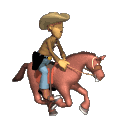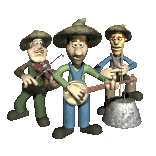



empty






 34083
34083
 27
27
WELCOME TO BLAZZIN COUNTRY


Kick Your Shoes Off and Stay Awhile For Some Awesome Country Music



Country (also called country and western) is a genre of popular music that originated with blues, church music such as Southern gospel and spirituals, old-time, and American folk music forms including Appalachian, Cajun, Creole, and the cowboy Western music styles of New Mexico, Red Dirt, Tejano, and Texas country. Its popularized roots originate in the Southern and Southwestern United States of the early 1920s.
Country music often consists of ballads and dance tunes (most commonly known as "Honky Tonk music") with generally simple forms, folk lyrics, and harmonies often accompanied by string instruments such as electric and acoustic guitars, steel guitars (such as pedal steels and dobros), banjos, and fiddles as well as harmonicas.
The term country music gained popularity in the 1940s in preference to hillbilly music; it came to encompass Western music, which evolved parallel to hillbilly music from similar roots, in the mid-20th century. In 2009, in the United States, country music was the most listened to rush hour radio genre during the evening commute, and second most popular in the morning commute.
The term country music is used today to describe many styles and subgenres. The origins of country music are found in the folk music of working class Americans and blue-collar American life. It has historical roots in the indigenous music of North America, Celtic music, early music of the British Isles, jota, Irish traditional music, singing cowboys, corrido, ranchera, norteno, French folk music, African-American music, and other traditional folk music traditions
Beginning in the mid-1950s, and reaching its peak during the early 1960s, the Nashville sound turned country music into a multimillion-dollar industry centered in Nashville, Tennessee. Under the direction of producers such as Chet Atkins, Bill Porter, Paul Cohen, Owen Bradley, Bob Ferguson, and later Billy Sherrill, the sound brought country music to a diverse audience and helped revive country as it emerged from a commercially fallow period. This subgenre was notable for borrowing from 1950s pop stylings: a prominent and smooth vocal, backed by a string section (violins and other orchestral strings) and vocal chorus. Instrumental soloing was de-emphasized in favor of trademark "licks". Leading artists in this genre included Jim Reeves, Skeeter Davis, Connie Smith, the Browns,[64] Patsy Cline, and Eddy Arnold. The "slip note" piano style of session musician Floyd Cramer was an important component of this style.[65] The Nashville Sound collapsed in mainstream popularity in 1964, a victim of both the British Invasion and the deaths of Reeves and Cline in separate airplane crashes. By the mid-1960s, the genre had developed into countrypolitan. Countrypolitan was aimed straight at mainstream markets, and it sold well throughout the later 1960s into the early 1970s. Top artists included Tammy Wynette, Lynn Anderson and Charlie Rich, as well as such former "hard country" artists as Ray Price and Marty Robbins. Despite the appeal of the Nashville sound, many traditional country artists emerged during this period and dominated the genre: Loretta Lynn, Merle Haggard, Buck Owens, Porter Wagoner, George Jones, and Sonny James among them.
This Station Is A Non Profit Radio Station.
DMCA Under The Copyright For Fair Use For Education Of 1976.
FAIR USE NOTICE: This site contains copyrighted material the use of
which has not always been specifically authorized by the copyright
owner. We are making such material available in our efforts to advance
understanding of music, broadcasting, radio presentation, etc. We
believe this constitutes a fair use of any such copyrighted material as
provided for in Section 107 of the US Copyright Law.
In accordance with Title 17 U.S.C. Section 107, the material on this site is distributed without profit to those who have expressed a prior interest in receiving the included information for research and educational purposes. For more information go to http://www.law.cornell.edu/uscode/17/107.shtml. If you wish to use copyrighted material from this site for purposes of your own that go beyond fair use, you must obtain permission from the copyright owner.
Thank You!
